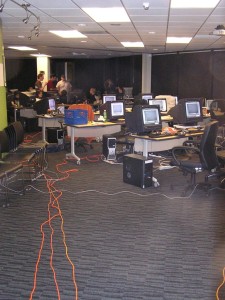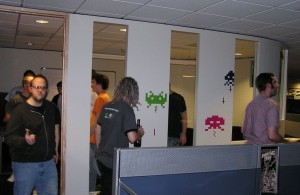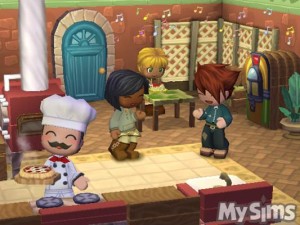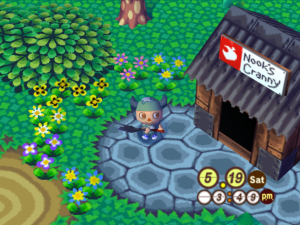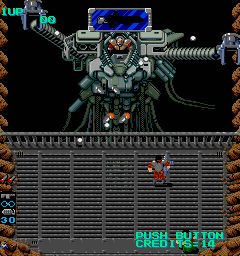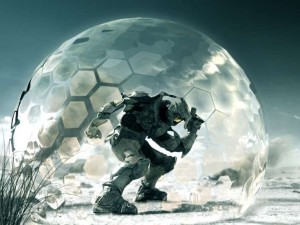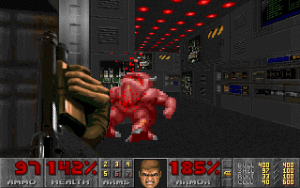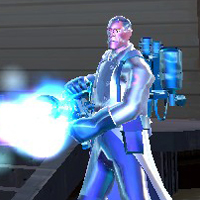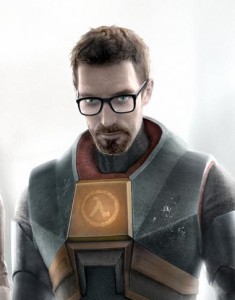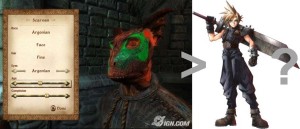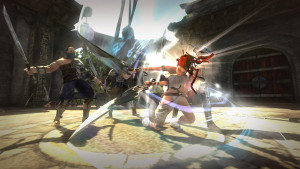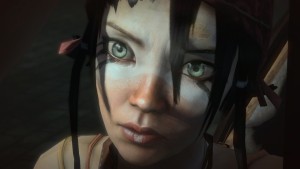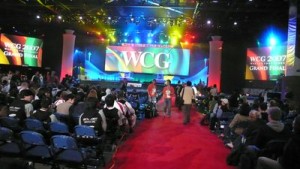 This weekend I spent some time at the World Cyber Games at the Qwest Field Event Center. I was manning a booth for Surreal, as part of an special section of the event hosted by local game school Digipen. They were holding a series of presentations, most notably a Symposium for Women in Gaming that included our own Brigitte Samson, who gave a presentation on the growing role of the technical artist in game development. There were booths from other local developers there too, so it was great to get a chance to talk to folks from Zombie, Flying Lab, Monolith and Valve while at the show.
This weekend I spent some time at the World Cyber Games at the Qwest Field Event Center. I was manning a booth for Surreal, as part of an special section of the event hosted by local game school Digipen. They were holding a series of presentations, most notably a Symposium for Women in Gaming that included our own Brigitte Samson, who gave a presentation on the growing role of the technical artist in game development. There were booths from other local developers there too, so it was great to get a chance to talk to folks from Zombie, Flying Lab, Monolith and Valve while at the show.
The booth, which we had to whip together sort of last-minute, was purposed as somewhere between education and recruiting. Unfortunately we didn’t have an announced title to talk about or show, so the theme of our booth was more about Midway overall than specifically about the Surreal studio. Luckily, we had some nice materials from Blacksite and Stranglehold… and since we share technology and even assets with those groups (our kick-ass artists and FX group have contributed some great work on those games as well), we consider them to all be part of the same family, so it was cool to represent our peeps nonetheless.
Anyway, this since this was the World Cyber Games, there were of course matches going on all day, so while I was mainly walking around to check out some of the playable games on the floor, I couldn’t help but get a big dose of the craziness that is competitive gaming.
There was a huge screen at one end of the hall, with good-sized audience sitting and watching these matches over the course of the multi-day event. It wasn’t a sold-out standing-room-only type of event, but it was fairly lively. These contests had the trappings of a full-fledged championship-level event, the competitors sitting in soundproof booths, the announcers introducing contestants and calling out the events onscreen…
Honestly, the idea of watching a bunch of people I don’t know play Starcraft really had no appeal to me, so I focused my attention on the kiosks for Left 4 Dead and Crysis. However, while I was waiting for a chance to play, I couldn’t help but catch a dose of what was going on in the competition… and as the announcer excitedly described one competitor’s gutsy push through the enemy’s defensive line, I got a bit hooked.
 I’ve always felt that the attempts to legitimize gaming as a “sport” (no doubt to be spoken in the same breath as baseball and football) was something of a joke, much as I wished otherwise… The “gaming pros” are hard to give the same level of respect for people who play videogames as we do sports athletes who achieve so much physically… (C’mon, who can you name besides maybe Thresh? I’ll give you a hint). That’s too bad, because for an pastime that still evoked images of closeted nerds, hyperactive 14-year-olds and bong-hitting college students, we could still use some heroes with more mainstream appeal (like a certain Dallas developer achieved a bit of 10 years ago).
I’ve always felt that the attempts to legitimize gaming as a “sport” (no doubt to be spoken in the same breath as baseball and football) was something of a joke, much as I wished otherwise… The “gaming pros” are hard to give the same level of respect for people who play videogames as we do sports athletes who achieve so much physically… (C’mon, who can you name besides maybe Thresh? I’ll give you a hint). That’s too bad, because for an pastime that still evoked images of closeted nerds, hyperactive 14-year-olds and bong-hitting college students, we could still use some heroes with more mainstream appeal (like a certain Dallas developer achieved a bit of 10 years ago).
Back at Raven I worked on a lot of games that supported online multiplayer, and during the development of every one I got calls from people who hoped to turn online matches into a spectator sport… but nothing ever really happened. One problem is that these guys were always starting with a game in development and asking for support (such as special camera controls) so that it would be “broadcast-worthy” (a tall order for a dev team working to hit a deadline). What they thought they could do is create the competition and the people would come regardless of the featured game… but the audience didn’t bite.
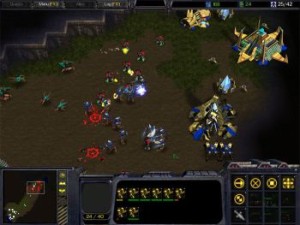 People want to watch games that they play themselves, or at least games they appreciate and understand. The problem with most online games is that there never are enough players to build a critical mass of people that are familiar enough to understand the strategy and drama behind it. Even fairly successful games like Battlefield 1942 are not as widely-played as something like Starcraft. It seems like every PC gamer on the planet has tried it… While it’s ten years old, it’s certain to be a standby (although perhaps replaced by Starcraft 2) for many years to come. You’d think that the games would update with the times, but you certainly don’t expect football to (significantly) change its ruleset every year the way gamers chew through new titles.
People want to watch games that they play themselves, or at least games they appreciate and understand. The problem with most online games is that there never are enough players to build a critical mass of people that are familiar enough to understand the strategy and drama behind it. Even fairly successful games like Battlefield 1942 are not as widely-played as something like Starcraft. It seems like every PC gamer on the planet has tried it… While it’s ten years old, it’s certain to be a standby (although perhaps replaced by Starcraft 2) for many years to come. You’d think that the games would update with the times, but you certainly don’t expect football to (significantly) change its ruleset every year the way gamers chew through new titles.
Maybe breakthrough titles like Halo could carry a similar audience, but there are few games out there that can. One thing that might increase the level of competition and get widely-publicized competitions some momentum is the evolution in shooters that we are seeing lately… With competitive games like Call of Duty 4 and Team Fortress 2 evolving to create meta-game elements like rankings, statistics, achievements and character-building, these games are going to be more competitive than ever. A player’s handle will be more than what he logs in as, it will be something that has an identity, complete with bragging rights. The top players will get more exposure as rankings become more prominently featured in these titles. Reputation and glory will become a major factor…
God knows that Korea is ten steps ahead of the rest of us. When the top Korean players appeared during WCG, those guys were rock stars! Perhaps it’s harder to find a charismatic gamer who measures up to a charming athlete, but somewhere down the line, competitive gaming will become accepted by the mainstream, and the industry will get those heroes that they are looking for.




